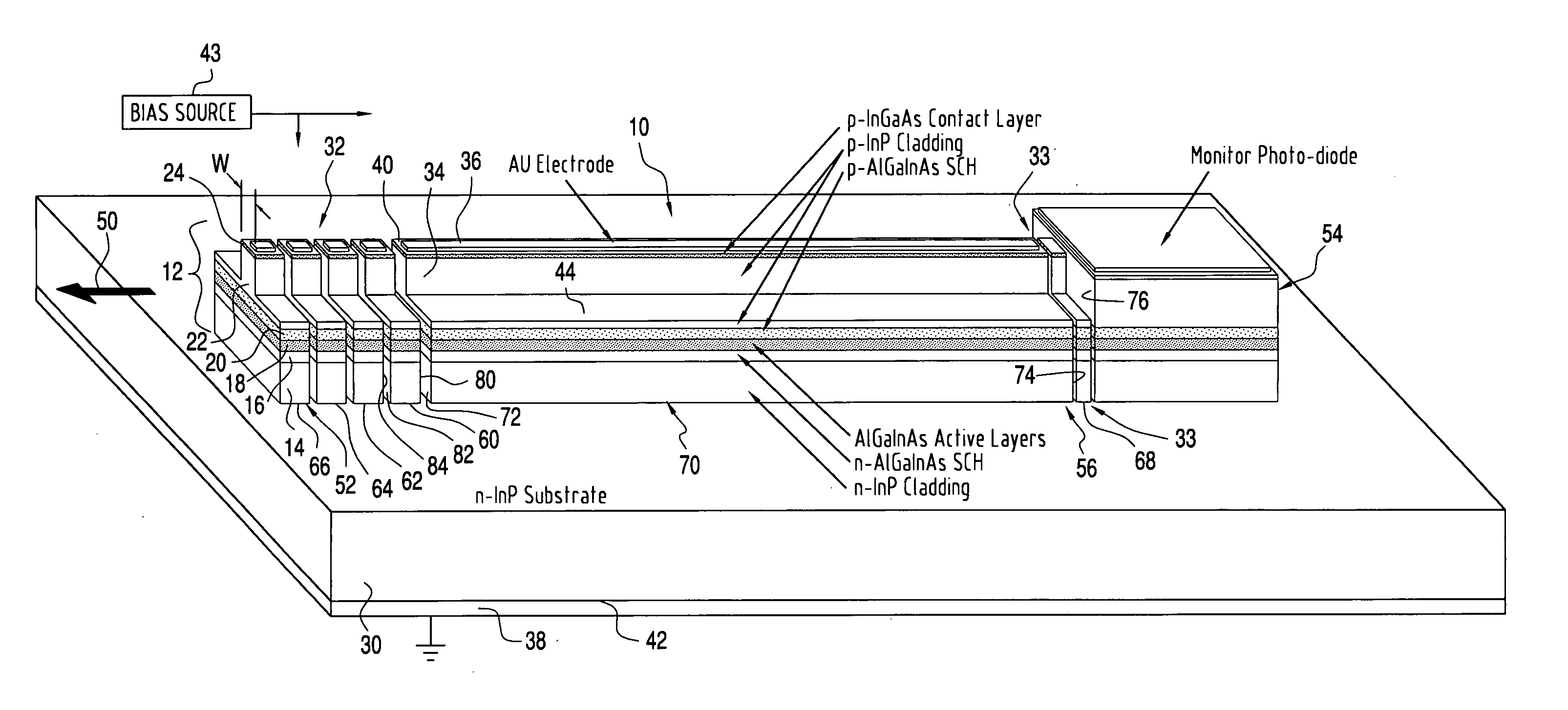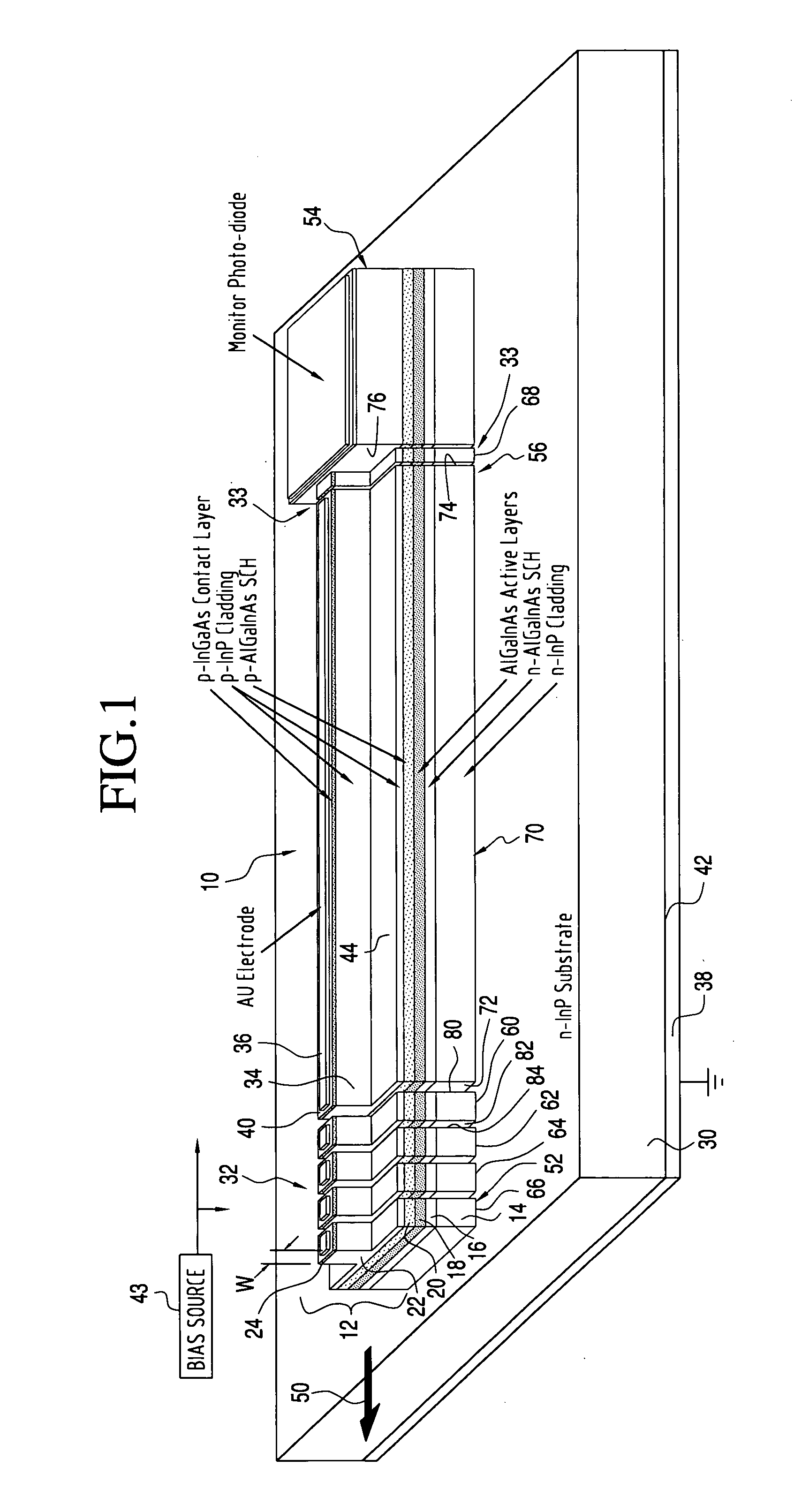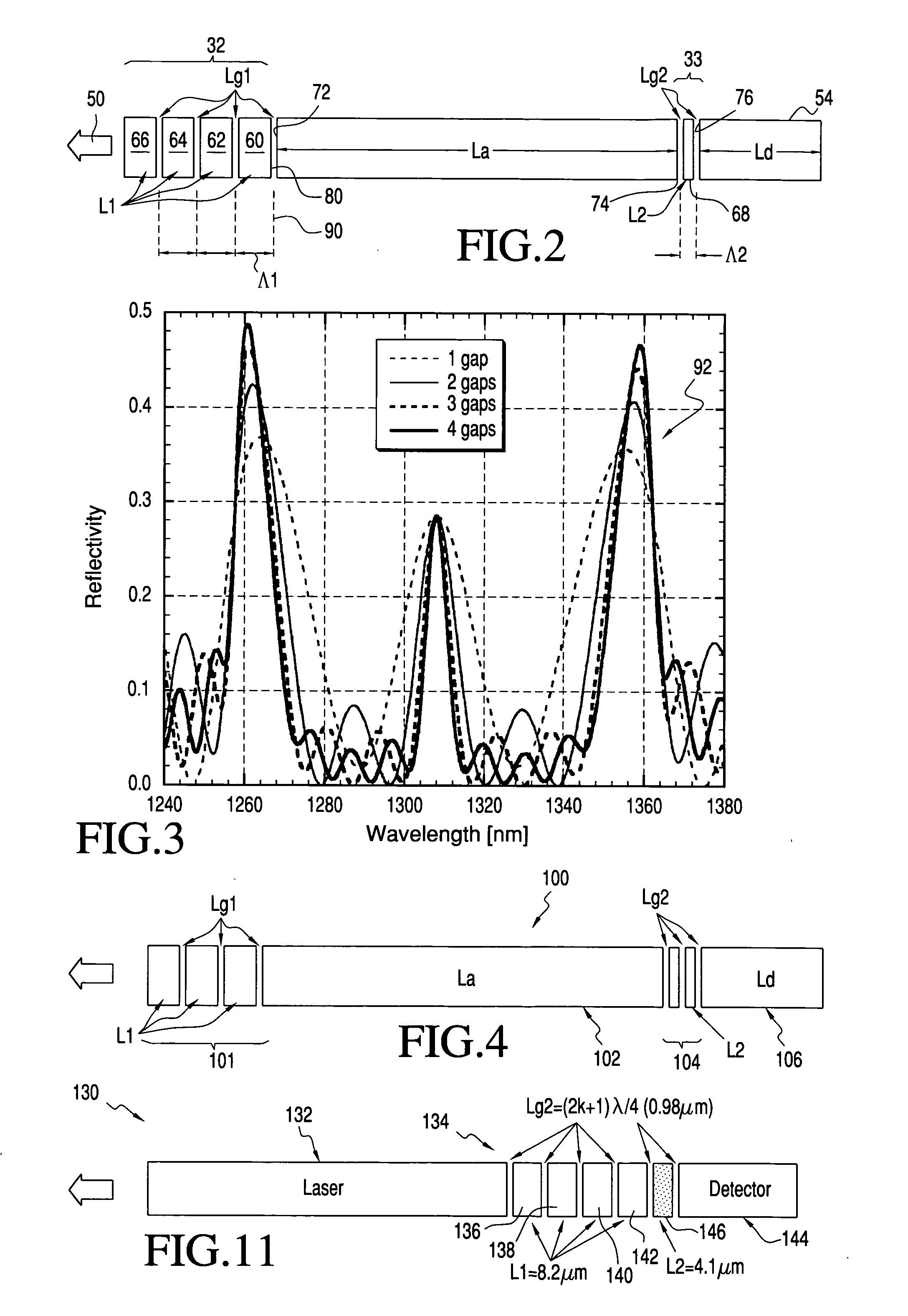Single longitudinal mode laser diode
- Summary
- Abstract
- Description
- Claims
- Application Information
AI Technical Summary
Benefits of technology
Problems solved by technology
Method used
Image
Examples
first embodiment
[0023] In a device constructed in accordance with this first embodiment, the wafer 12 was fabricated with an n-InP cladding layer 14, an n-AlGaInAs SCH (separate confinement heterostructure) layer 16, AlGaInAs strained multi-quantum well active layers 18, a p-AlGaInAs SCH layer 20, a p-InP cladding layer 22 and a highly doped p-InGaAs contact layer 24, formed successively on an n-type (100) InP wafer 30. The active region 18 consisted of, for example, six 6 nm compressively strained AlGaInAs quantum wells separated by 10 nm tensile-strained AlGaInAs barrier layers; the band gap of the quantum well was about 1300 nm.
[0024] The laser 10 was formed from the epitaxial wafer 12 by two steps of chemically-assisted ion-beam etching (CAIBE), which were carried out using an SiO2 mask, patterned by lithography in conventional manner. Multiple blocks 32 and 33 (to be described) were formed along the longitudinal axis of the laser 10, at its front and back ends, respectively, by the first CAIBE...
second embodiment
[0033]FIG. 4 is a one-dimensional schematic diagram of the present invention. In this embodiment, the laser 100 includes a front reflector 101 having three elements, a main cavity 102, a rear reflector 104, and a monitor 106. The specific parameters of a device fabricated in accordance with this configuration were N=3, L1=8.06 μm, Lg=1.31 μm, M=2, L2=4.08 μm, Lg2=0.98 μm, La=200 μm and Ld=100 μm. In this design, the FSR of the front reflector structure 100 was ˜28 nm. With these parameters, a mode jump into the neighboring filter peak will occur every 70 deg. C., because the temperature dependence of the gain peak and the resonant mode are 0.5 nm / C and 0.1 nm / C, respectively. This is not good enough for an uncooled device, which is expected to be single mode operation in the temperature range 0-85deg.C. Accordingly, the rear DBR reflector 104 was carefully designed to give reflection dips on the neighboring filter peaks of the front FP structures in order to suppress the mode jump. ...
third embodiment
[0040]FIG. 11 illustrates at 130 the invention, wherein the front reflector stack for the laser cavity 132 is eliminated, and wherein a rear stack 134 includes four high-reflection FP elements 136, 138, 140 and 142, each having a length L1 of about 8.2 μm forming a narrow-band stacked FP filter. Between the stack 134 and a monitor photodetector 144, is a narrow FP filter element 146 having a length L2 equal to about 4.1 μm. The gaps Lg2 between the filter elements have a width of (2k+1)λ / 4, where k is an integer, or in this embodiment, about 0.98 μm. The quarter-wave gaps provide a narrow band, high reflection filter that results in higher slope efficiency.
PUM
 Login to View More
Login to View More Abstract
Description
Claims
Application Information
 Login to View More
Login to View More - R&D
- Intellectual Property
- Life Sciences
- Materials
- Tech Scout
- Unparalleled Data Quality
- Higher Quality Content
- 60% Fewer Hallucinations
Browse by: Latest US Patents, China's latest patents, Technical Efficacy Thesaurus, Application Domain, Technology Topic, Popular Technical Reports.
© 2025 PatSnap. All rights reserved.Legal|Privacy policy|Modern Slavery Act Transparency Statement|Sitemap|About US| Contact US: help@patsnap.com



